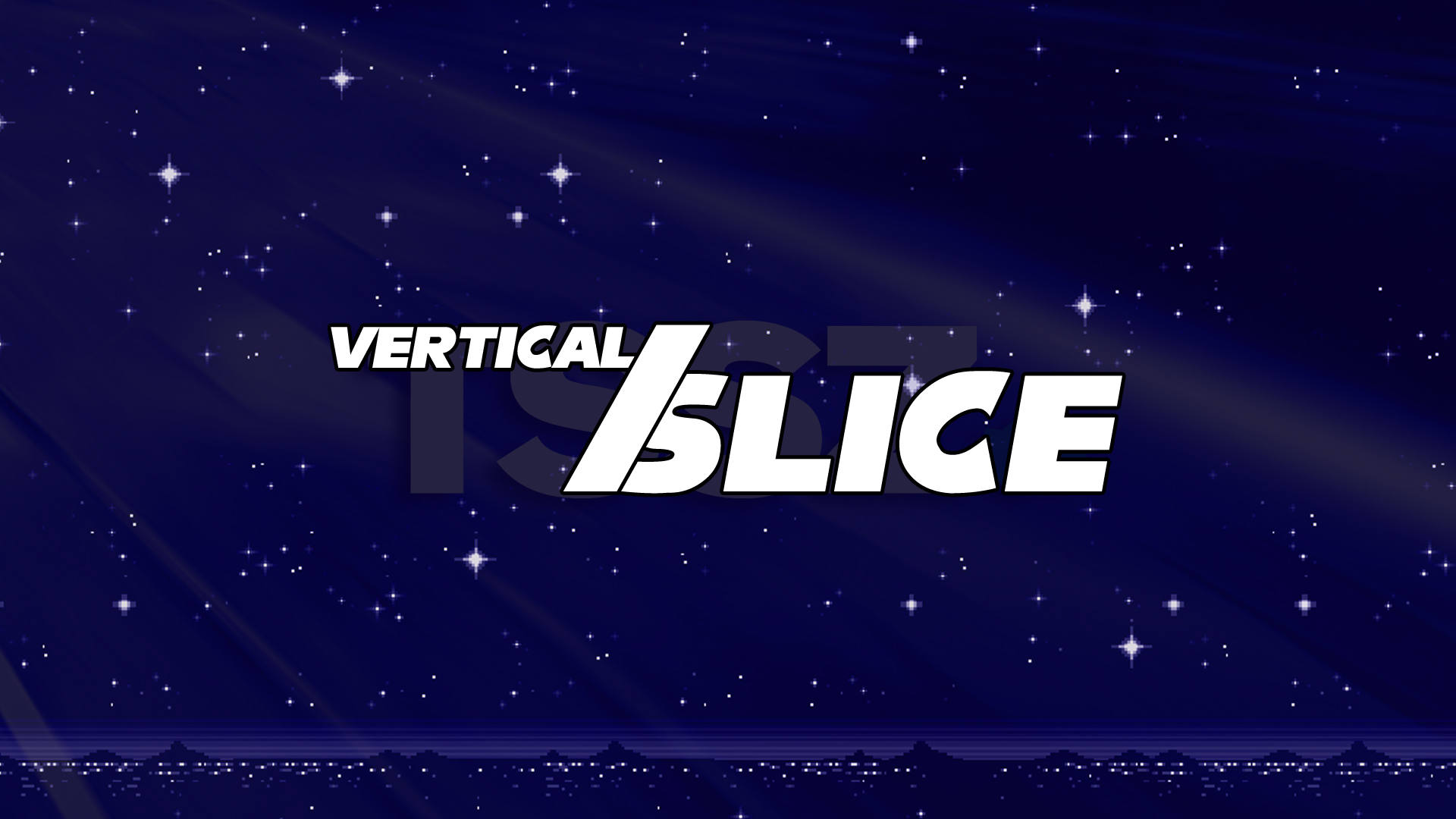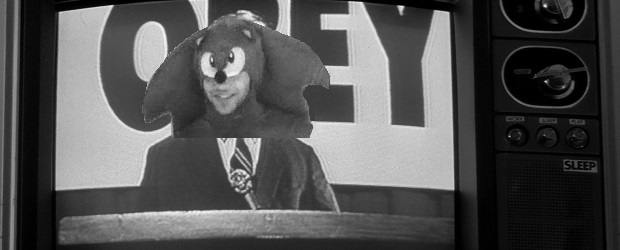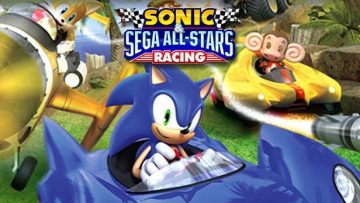
Vertical Slice: Sonic Dash and Abusive Video Game Manipulation
So Sonic Dash has finally, and somewhat covertly, made the jump from iOS over to Android. Fortunately for me, it appeared on the Google Play shop during a bout of illness which had me confined to bed for the good part of three days, giving me the perfect excuse to dive into Hardlight Studio’s endless runner. And boy, what a dastardly little free-to-play game it is.
Now, I met the free-to-play (F2P) videogame business model during its first appearance in the MMORPG scene with the likes of the NCSoft’s Exteel and Dungeon Runners (both defunct) and Aeria Games’ Shaiya. These graphically modest games offered an inexpensive way to play games online with freinds and family on my laptop following my move to university.
The games and I had an understanding — I’d look at image based adverts for other F2P during loading screens and I’d consider purchasing the myriad upgrades on offer, but the games would never hinder my gaming experience on a practical level. Therefore, being the tight bastard I am, I enjoyed a wealth of gaming without spending a penny.
But it wasn’t until the F2P model was applied to the rapidly developing world of Facebook games that — at least from my perspective — “free-to-play” devolved from a mutual agreement between developer and player, to the sordid industry unmentionable it is today. And it didn’t stop there — the developers of new this new wave of F2P games became increasingly relentless in their quest to exchange our cash for in-game conveniences. As such, each new game became was more adept at infiltrating our wallets than the last, resulting in what I can only describe as a psychological arms race between developer and player.
I quit using Facebook five or so years ago, and never really came into direct contact with the types of Facebook games described above. However, the nuances of titles such as Candy Crush Saga and FarmVille have been described in great detail by gamers and the gaming press alike. I thought I’d know what to expect as Hardlight Studio’s logo faded away and the sickly smile of our favourite blue hedgehog took its place.
How wrong I was.
Underneath its vivid aesthetics, impressive graphics and catchy music, Sonic Dash is nothing more than a glorified seaside penny pusher. Sega have taken each and every opportunity possible to present to players the idea of spending cash on Sonic Dash‘s wonderful power ups, upgrades and extra characters e.g. the difficultly spikes, the excruciatingly slow collection of Red Rings, the high price tag on practically all useful power ups — even the loading screen “hints” are basically adverts, accompanied by none other than a picture of a shopping trolley!
But at least I can get those upgrades and extra characters eventually. I simply have to subject myself to Sonic Dash‘s manipulative, psychological assaults on a daily basis. Then I would have achievement have achieved something, wouldn’t I? Well, apart from Sonic Dash‘s completely farcical high score leader board which does nothing more than show which players spent the most real world cash.

Some time ago I watched a interview — a deleted scene from Indie Game: The Movie — with Edmund McMillen of Super Meat Boy and The Binding of Isaac fame in which he talked about his experimental mini-game titled AVGM a.k.a. “Abusive Video Game Manipulation”.
In AVGM the only action available to players is the clicking of a light switch situated in an empty room. After a seemingly undetermined and arbitrary amount of clicks, a new item would appear in the room. More clicks meant more interesting items were unlocked — encouraging players to keep on clicking, over and over again.
In this interview, McMillen explained how AVGM was a statement against most F2P games, especially those on Facebook, which give meaningless rewards for performing incredibly repetitive and skill-less tasks. But the part of the interview that I found most interesting was McMillen’s criticism of how F2P developers coerce players into performing these tasks everyday, at which point they’ll offer an upgrade to make these tasks easier to complete, all for a negligible amount of real world money. In essence, the developers create the repetitive tasks as well as the purchasable power-ups to help complete these tasks, yet they still manage to manipulate players into thinking these transactions are friendly favours offered by the developer.
For example: How many times have you been glad, nay, thankful for the free revival Sonic Dash offers a with a simple trailer viewing — a trailer that gives Sega money and gives you nothing.
Put on your tin foil hats. We’re through the looking glass here, people.




![Private: [ID: UoDVikjtmbg] Youtube Automatic](https://lastminutecontinue.com/wp-content/uploads/2024/02/private-id-uodvikjtmbg-youtube-a-360x203.jpg)
![[ID: u1vSktPoLbA] Youtube Automatic](https://lastminutecontinue.com/wp-content/uploads/id-u1vsktpolba-youtube-automatic-360x203.jpg)
![Private: [ID: XKIKmD3-crc] Youtube Automatic](https://lastminutecontinue.com/wp-content/uploads/2023/03/private-id-xkikmd3-crc-youtube-a-360x203.jpg)
Sigh. SEGA has reached all new lows with the blue hedgehog….
Naw man that happened a LONG time ago. They all ready reached their peck in low quality with Sonic
Every trailer that comes up should have this song playing http://youtu.be/wM89T74MPnE
mun num ah num XD
Dat Sonic troll face! XD
It baffles me as to why people were even hyped for the Android version. I bought the game on iOS when it came out, equally hyped (back then it was 2 bucks). I immediately noticed that despite the price tag, the game constantly bombarded me with prompts to purchase more rings. Especially red rings, those were awful, you couldn’t find them at all in gameplay and could only get them by completing sets of missions, 3 at a time. In fact, since there were only 11 sets of missions, it was impossible to unlock ANY character without paying money for more red rings.
Then the game went F2P and aside from pissing me off because of money I should have saved for other games, it added a crapton of video ads that would sometimes show up to interrupt the loading screen and cause the entire app to lock up. Disabling wi-fi does remove these, but imo at least there should be an option to disable ads, at least for people who bought the game originally.
Sonic Dash is a good example of the modern negative stereotype of F2P games, free on the surface but in reality, tries to force players to use as much real money as possible. And the worst part is that it’s one of the better F2P games. Countless others exist that nickel and dime players far more (Deer Hunter and its energy bar), have lower production values (Sonic Dash having some very good graphics for what it is), and lower quality gameplay. It makes one wonder about the future of mobile gaming.
I don’t see why everyone is knocking this game for the adds. I got this game for 2 bucks the day it came out on ios. I play it on the train to work very often. It’s fun. After the initial purchase, I’ve never spent another dime on the game, but I’ve maximum upgraded every power up, unlocked every character etc. It’s quite a fun a game.
I’m guessing haven’t played Sonic Jump, because that game is even worse at these problems than Dash. Sonic Dash isn’t too bad with ads (iOS version, lol), and I’ve pretty much progressed as far as possible in the game without tearing hair from my head or paying a cent.
You did address a concern of mine, but it’s relatively minor in Sonic Dash. I wouldn’t say it’s worth bashing for just what you said. Still, you gave this some thought, and kudos to you. I’m looking forward to your next Vertical Slice, whether or not I agree with it.
I found Jump much less intrusive with the purchase prompts, along with no ads. There’s a reason the game hasn’t gone F2P yet.
Developers NEED to do this because of the mobile gaming space:
a) You don’t want to charge for your game up front, because everyone wants apps for free
b) Once they’re playing your game, even if they like it, it’s very unlikely they will give you any money for it
It’s not the goldmine everybody thinks it is. I would be surprised if Sonic Dash is just breaking even for Hardlight.
I agree with espioisclearlyreadytogo up there. When it comes to me though, I ended up losing my iPhone at one point thus never being able to play Sonic Dash again. I don’t care if there are adds or anything, I just want to play the game!!! 🙁
…hgis
Historical Geographic Information System.